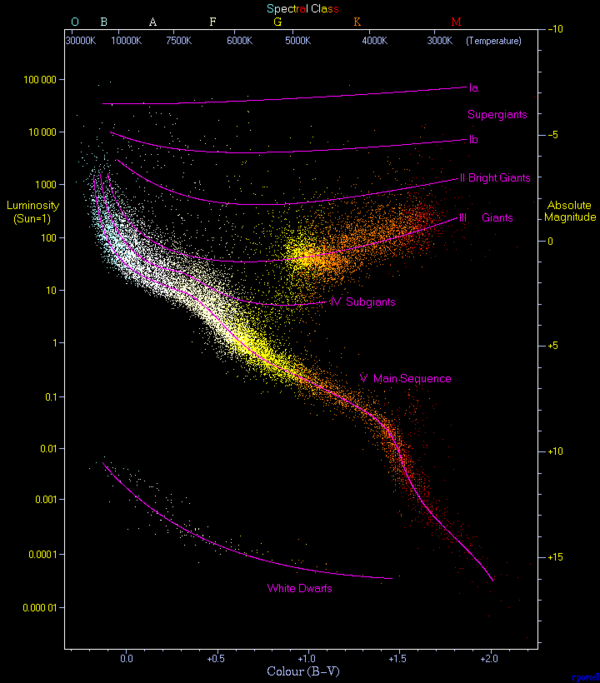What is the relationship between stellar temperature, radius, and luminosity?
1 Answer
For stars in their main sequence, as stellar mass increases, so do diameter, temperature and luminosity. The relationship is represented in the Hertzsprung-Russel diagram.
Explanation:
In the H-R diagram shown below, the brightness (luminosity) is presented on the y axis, and temperature on the x axis (from right to left). The main sequence is the population of stars shown diagonally from top left to bottom right.
Brightness clearly increases with temperature, and with any incandescent (glowing from heat) object, the hotter the object the bluer its light.
What makes a star hotter is a more rapid rate of fusion in the core, which is driven by higher pressure from higher mass.
So the bigger the star (mass and diameter), the brighter it is, the hotter it is, and the bluer it is. Smaller stars are cooler and redder.
Stars off the main sequence - red giants and white dwarfs - don't follow the same pattern. Red giants produce tremendous energy, but they are puffed up, so the surface area is massively increased. As a result, their surface temperature is low, so they are bright but red.
White dwarfs are dying naked stellar cores and very small. They produce less energy, but have a very high surface temperature, so white but dim.

